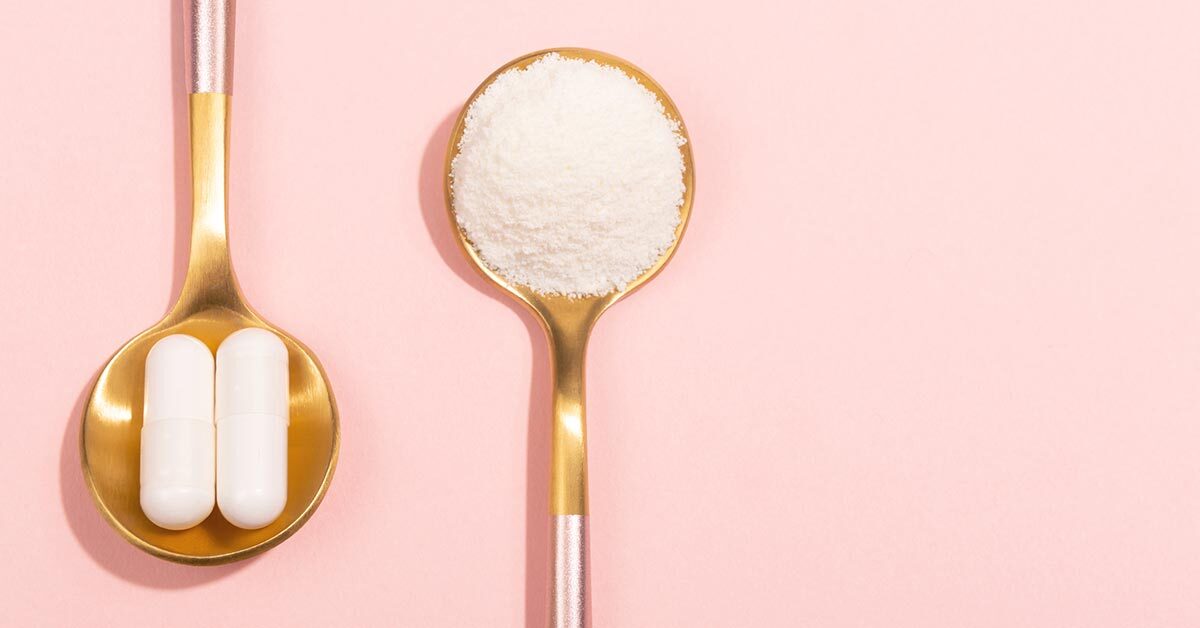People are looking to functional foods and wellness products to enhance health and wellness and collagen is one of those hot topics. Is collagen a trend? With its wide range of skin and health benefits, it’s become one of the wellness products that’s trending high.
And interest is growing — mostly due to its claims of improving skin’s elasticity and promoting a vibrant, youthful complexion. While some may see it as hype, early research shows that consuming collagen may actually do everything from improving joint pain and reducing wrinkles to promoting muscle growth and aiding weight regulation.
Collagen is a type of protein. It’s actually the most abundant structural protein in animals. It is structural’ because it contributes to making the structure or format of our cells and tissues. It helps in tissue repair, immune response and communication between cells. As we age our ability to produce collagen reduces.
There are 28 types of collagen. Type I collagen is the most prevalent accounting for 90% of the collagen in the human body. Collagen is composed mainly of the amino acids glycine, proline, and hydroxyproline. These amino acids form three strands, which make up the triple-helix structure characteristic of collagen. They can be found in various sources like bovine, chicken, fish and eggshell membranes. There are also different sub-types of collagen with each one containing different types that benefit different areas of health.
TYPE 1 collagen is the most common making up about 90% of the collagen in our bodies. It is in almost every tissue and works to make up our bones, tendons, ligaments, cartilage and connective tissues. The unique triple helix structure provides the strength and elastic quality to these parts of the body. As type 1 collagen degrades it becomes obvious in your skin as you start to notice fine lines and wrinkles.
TYPE 2 collagen is found in your cartilage and is important for joint health. It provides the ‘cushion’ in the cartilage for your bones and joints, along with strength and elasticity to support ease of joint movement. It’s structure is also a triple helix but the fibres are packed a little more loosely.
TYPE 3 collagen is often found with Type 1 collagen – it makes up muscles, arteries and connective tissues in some of the internal organs as well as in our cartilage and bone marrow.
TYPE 4 collagen is different from types 1, 11, and 111 as it doesn’t form a fibrous triple-helix format but rather is created in a web-like pattern. This makes up a thin layer outside the cells, supporting cell structure. It’s also found in the skin and other internal organs.
TYPE 5 collagen is only found in the formation of cell surfaces and in hair.
Taranaki Bio Extracts manufacture a beef bone collagen extract – To learn more
Beef Bone Collagen Extract – Taranaki Bio Extracts
Ends
